Broken Crown? What to Do If You Have a Cracked Dental Crown
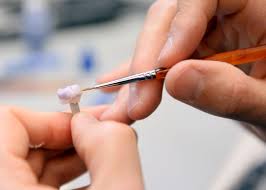 In a perfect world, people would never experience dental problems. Even in a slightly less-than-perfect world, dental problems that do occur could be fixed and forgotten about.
In a perfect world, people would never experience dental problems. Even in a slightly less-than-perfect world, dental problems that do occur could be fixed and forgotten about.
Unfortunately, we live in a far from perfect world and there is no telling when dental problems will occur or reoccur—dental implants go wrong, temporary crowns fall out, root canal treatment is needed, tooth structure needs works, cracked teeth appear, fillings, tooth nerve damage, tooth decay, dental bridge work, and is often the case with dental crowns. Dental crowns are “caps” that are placed over a tooth to restore its shape and size after work needs to be done on it.
Tooth crowns include temporary crowns and permanent crowns, such as all-ceramic crowns, porcelain dental crowns, porcelain veneer, and even gold crowns are a long-term solution to strengthening teeth, offering restoration of teeth, and keeping your smile looking great by covering any damage or weakness that might have occurred from lack of dental care or from correcting a problem tooth.
“Our modern materials closely mimic natural tooth enamel. That also means a crown can break just like a tooth does. It’s not common, but about 5% of porcelain crowns will break over time.”
Crowns might also be used to cover misshapen or discolored teeth, to cover a dental implant, or to restore a broken tooth. Despite crowns be an effective dental care tool, they are not totally damage-proof and they can break or fall off.
Anyone who has experienced this knows the feeling—that jagged, sometimes painful, effect caused by a missing crown. It requires repair as soon as possible, but since crowns can break or fall off at any time, immediate care is not always an option.
What Should You Do If a Crown Breaks?
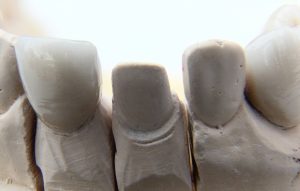
Missing crowns can be painful so, if you are experiencing a lot of pain, let your dental office know so they can prioritize you over patients who aren’t in pain.
If you lose a crown during a time when your dentist is not available for an emergency visit, there are a few things you can do to ease your discomfort and prevent further damage until you’re able to get in for an appointment. For instance:
- Look in the mirror or have a friend or family member examine the affected area. See if there are pieces missing from the tooth or if the crown is hanging loose. You’ll want to pull it off completely to avoid swallowing it.
- Rub your tongue (very gently!) across the affected tooth. Check for jagged edges that could cut your tongue or other soft tissue in your mouth if you inadvertently rub across it. If the tooth is relatively smooth, you’re dealing with less of an emergency situation than if the surface is sharp or jagged.
- Consider your pain level. If you have just mild pain, an over-the-counter pain reliever should help ease it, as long as your health permits the use of these medications. If you are dealing with extreme pain, sensitivity or you are bleeding, you’ll need to make an emergency appointment with a dentist.
Why Do Crowns Break?
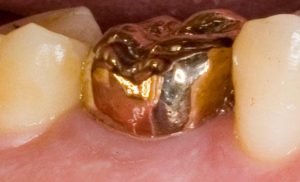
Crowns are strong, but they aren’t designed to last forever.
What are some of the most common reasons crowns break or fall out?
Age
Crowns are designed to be long-lasting and can stay in place for a lifetime, but this is usually not the case. Most crowns last about five to fifteen years. As we age, and our crowns age, they become weaker and in some cases, can break off with very little force. Sometimes, just a small crack that develops over time can grow into a large gap or snap off completely.
Sometimes the problem is the material used to make the crown. Many people prefer crowns that are made of resin or porcelain because they look natural, but they are not as strong as the other options. You can opt for porcelain fused to metal, which gives you the look of a natural tooth, but the strength of the metal.
Grinding or Clenching

Not only can clenching and grinding wear down your crowns, these habits will also wear on your natural teeth so it’s important to find ways to break the habit or offset the damage.
Installation
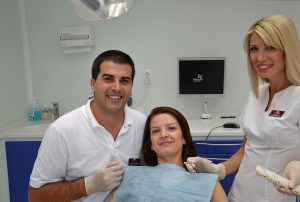
There’s only so much you—as the dental patient—can do to prevent this, but it helps to ask your dentist how much experience they have with crowns. Also, be sure you are working with a reputable dentist who has the necessary qualifications to install a crown.
Hard Foods and Sticky Foods
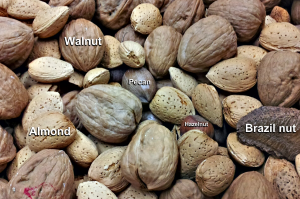
Of course, everyone’s heard a story or two about a person who broke a crown eating soup or biting into a banana, so there’s really no telling what will cause a crown to break once it’s weakened. Still, you can reduce your risk by avoiding sticky, hard foods when you have a crown.
Crowns break unexpectedly and you need to find dental care as soon as possible, especially if you are in pain. If you happen to lose a crown when your usual dentist is unavailable or it’s been years since you’ve last seen the dentist and you’re faced with a dental emergency, we can help. Use our contact form or call us toll-free at the number provided for more information.
Medically Fact-Checked & Written by Our Dental Editorial Team
You can read more about our editorial guidelines by clicking this link and learn more about the Emergency Dentists USA editorial team here.


